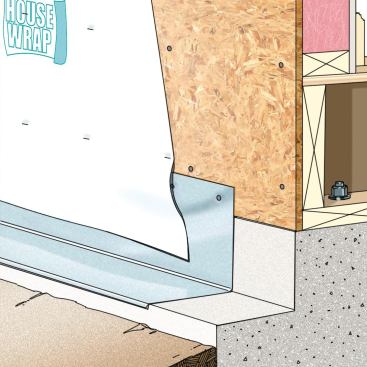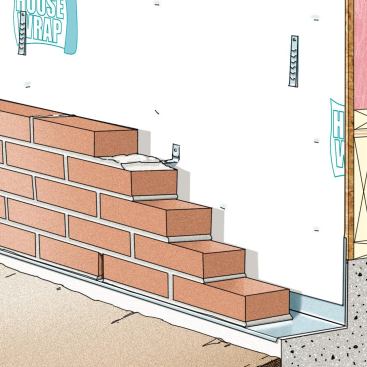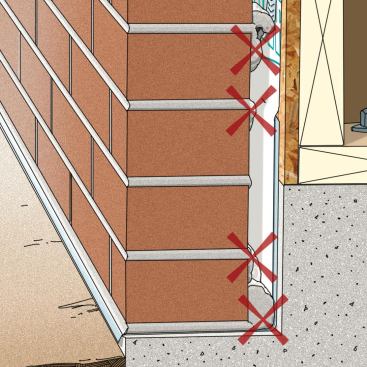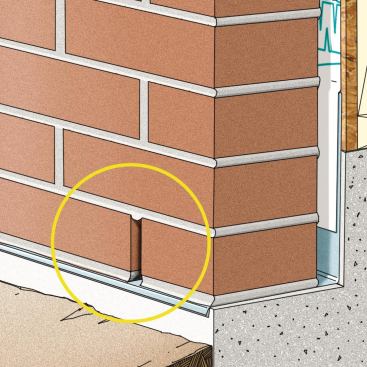Harry Whitver
Whether you’re specifying full-sized bricks or a thin-brick veneer as a home’s predominant cladding or just using it to highlight the home’s entry, the key to maintaining long-term performance is a 2-inch air space between the brick and the structural wall. To perform properly, that air space must be unencumbered by mortar and designed to shed incidental water to properly sized and placed weep holes at the bottom of the wall.
Not only is that kind of assembly a smart hedge against callbacks and latent moisture damage, it is also required in the current International Residential Code and its predecessors.
But it’s often not done properly—or at all. “We rarely see weep holes and through-wall flashing on brick veneer homes,” says Stephen M. Yingst, PE, CBIE, of Criterium-Yingst Engineers, based in Hershey, Pa. “Even though it has been a code requirement since the 1980s.”






